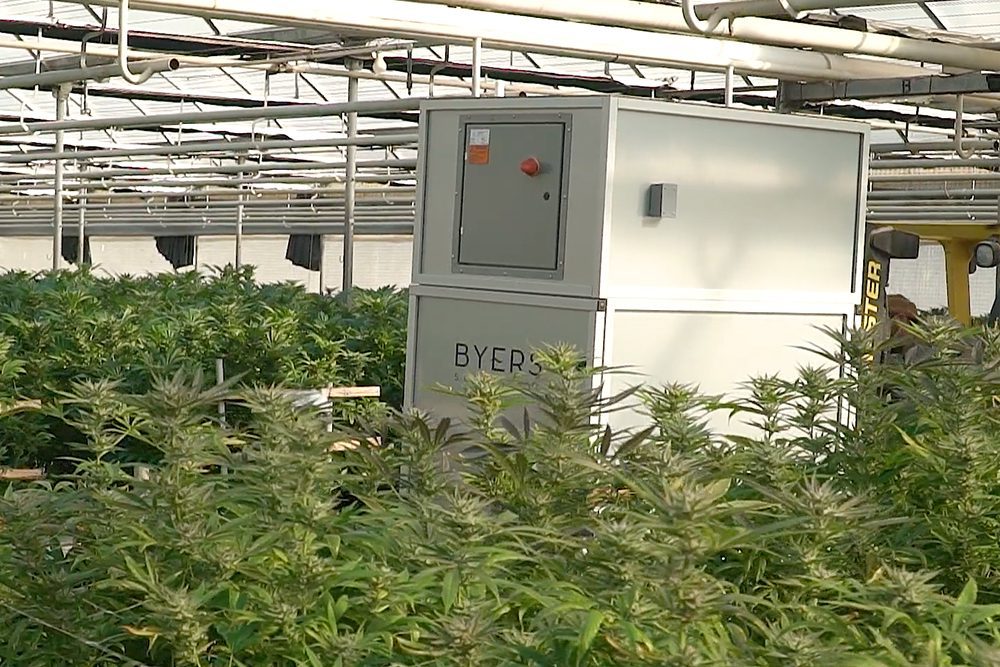Hemp cultivation has decreased across the United States again this year. This drop can be attributed to a number of different factors, including stalled regulation and pushback from communities living close to cultivation facilities. Often, this community pushback comes down to hemp cultivation odors.
Odor complaints pose a significant challenge for growers—pitting their community against them in a “cannabis war” that often costs time and money.
Fortunately, Byers Scientific leverages years of research to develop effective and efficient marijuana and hemp odor mitigation technologies. For example, our industry-leading MT-6 scrubber utilizes adsorption to trap and sequester odors from indoor and greenhouse cultivation operations before they wreak havoc on a community.
Adsorption vs. Absorption—What’s The Difference?
When we typically talk about collecting substances, we use the word absorption. In absorption, a fluid substance is collected into the “bulk phase” of another substance—like a towel absorbing water on a counter.
Adsorption is a similar process, but you can think of it more like a magnet. In adsorption, molecules in a fluid bulk (like the air around us) transfer and stick to the surface of a solid substance (like carbon) as a result of chemical or physical forces. In essence, the solid attracts molecules out of the gas and collects those molecules on its surface.
Carbon Adsorption for Hemp Odor Control
Molecular filtration technology works by drawing air through the scrubber using fans. Then, the air passes through filters of activated carbon, harnessing adsorption’s magnet-like effect with a number of different materials.
Activated carbon is the most-used medium, and for good reason. It is ideal for tackling odorous compounds such as the terpenes and thiols emitted by hemp plants. Due to its large, porous surface area, carbon can hold a large volume of odor-causing molecules emitted by hemp plants throughout the growing process.
However, not all carbon media is created equal. The efficacy and efficiency of molecular filtration depends on the carbon utilized. For example, the particular type and size of activated carbon used in our MT-6 Molecular Filtration System is engineered specifically to adsorb cannabis odors more effectively.
The MT-6 Scrubber: Best Available Control Technology For Hemp Cultivation Odors
Our team of experts at Byer Scientific has worked to create cutting-edge odor mitigation technology that’s both efficient and effective. Touted as the best available control technology (BACT) on the market, our MT-6 molecular filtration technology is the most sustainable and environmentally friendly way to trap and sequester hemp cultivation odors.
First, the MT-6 employs a pre-filter that uses proprietary dual-layer media with a moisture-resistant frame. This pre-filter helps prolong the life of the carbon and improves efficiency.
Each MT-6 scrubber also features the best available activated carbon media with an efficiency removal validated to ASHRAE 145.2 & ISO 10121-2.
Surprisingly, in spite of its power, the MT-6 scrubber is energy-efficient and quiet. The MT-6 features an energy-efficient fan that produces minimal noise—55 dB, or about the same as a standard refrigerator—with power consumption of just 2.8 amps / 480v at 6,000 CFM.
The MT-6 Scrubber Rises Above the Rest
The MT-6 scrubber is manufactured using durable aluminum and aluminate to ensure stability and long-term use. It can be installed vertically or horizontally to best suit your facilities’ specifications and needs. The MT-6 comes with Cloud-based SCADA, so you have 24/7 remote access to the system for operation and reporting (compliance) purposes.
Most importantly, with the help of our Byers Emissions Analysis team, we can right-size our solutions to help you determine the exact number of scrubbers needed for your facility, cutting back on excess and saving you money and space!
Click to learn more about our top-of-the-line molecular filtration technology today.


